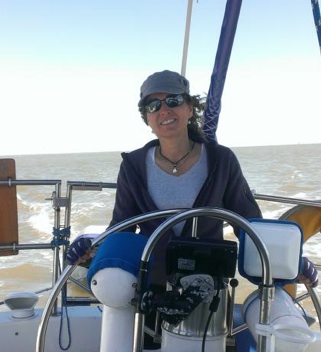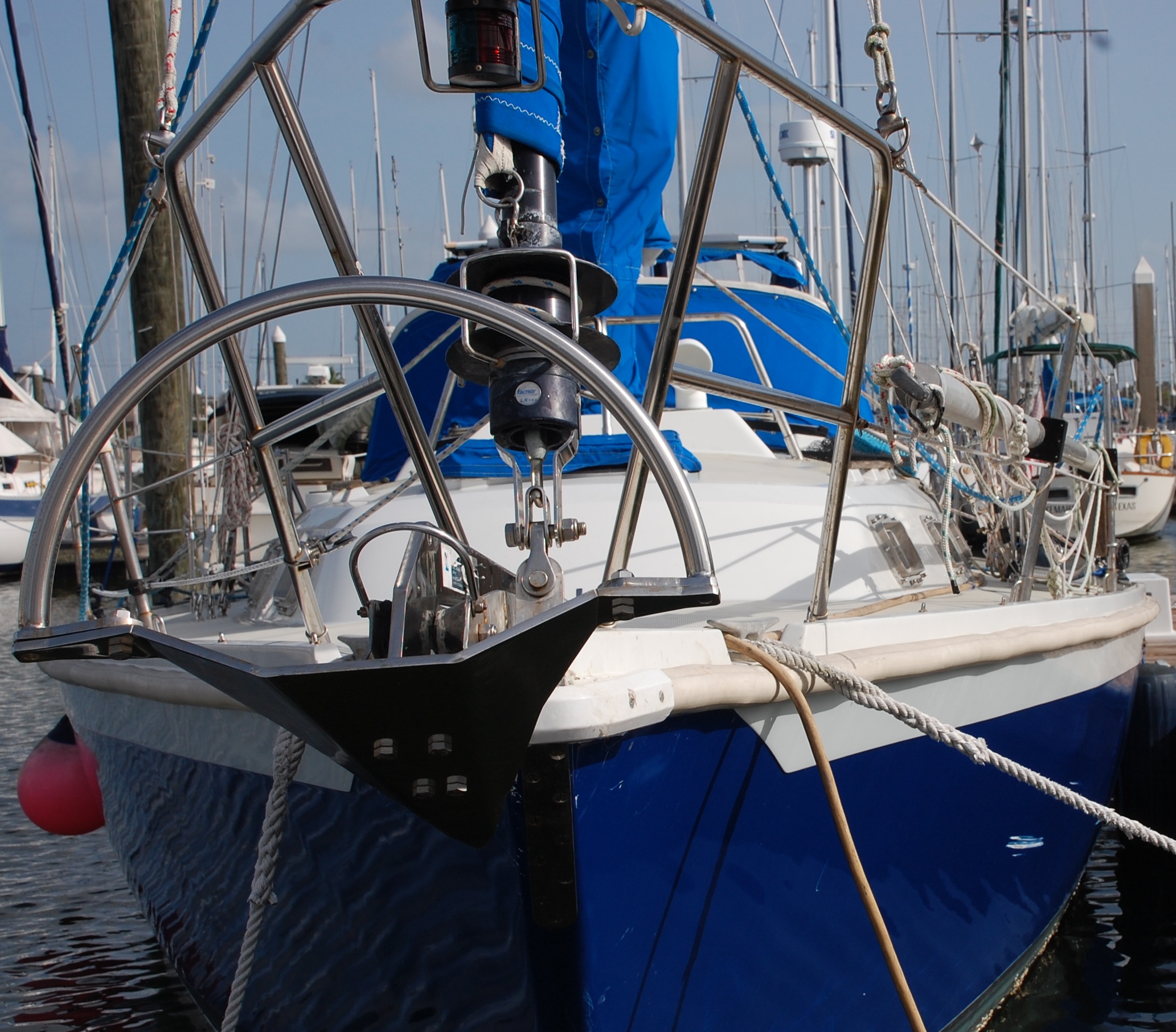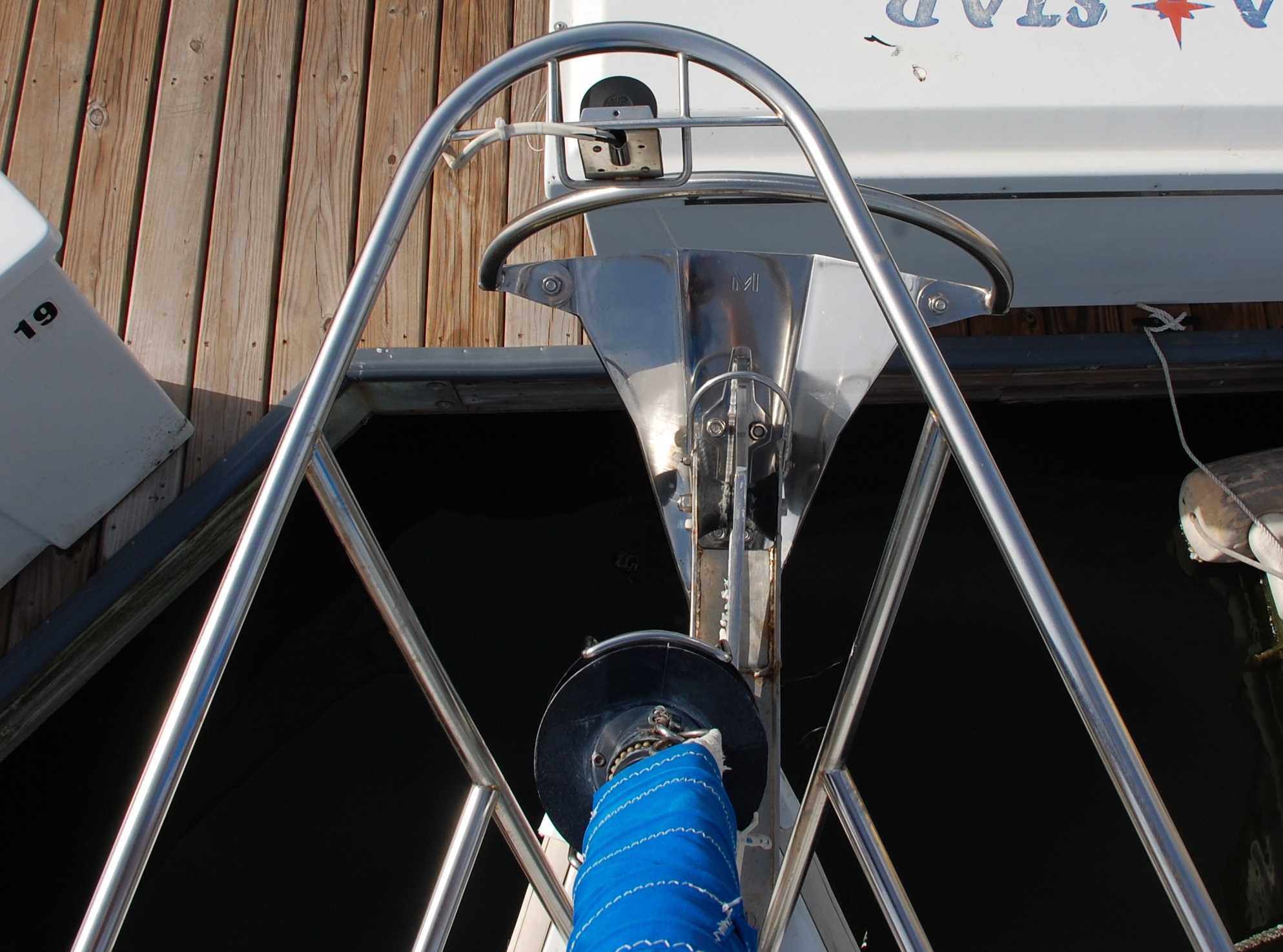Life’s a Drag….
 Anchors…. Just mention the word among seasoned sailors and the tales of woe will run deep into the night, far outlasting the rum and cervesas. We’ve had our share… Coconut proudly sported a CQR as a primary and a Fortress as a back-up when she left Houston and sailed to Galapagos. The CQR is a “Goldilocks anchor” – it doesn’t like anything too soft or too hard – the bottom must be juuusst right. It drags in soft bottoms and getting it to set in harder bottoms requires diving. The Fortress on the other hand thrives in soft loose soil – the large blades offer great holding and it stows away nicely, but trying to set it in harder grounds is useless. Ideally we wanted something that would set when deployed first time regardless of soil conditions… Is that really too much to ask? When we see a problem our minds instantly start creating solutions.
Anchors…. Just mention the word among seasoned sailors and the tales of woe will run deep into the night, far outlasting the rum and cervesas. We’ve had our share… Coconut proudly sported a CQR as a primary and a Fortress as a back-up when she left Houston and sailed to Galapagos. The CQR is a “Goldilocks anchor” – it doesn’t like anything too soft or too hard – the bottom must be juuusst right. It drags in soft bottoms and getting it to set in harder bottoms requires diving. The Fortress on the other hand thrives in soft loose soil – the large blades offer great holding and it stows away nicely, but trying to set it in harder grounds is useless. Ideally we wanted something that would set when deployed first time regardless of soil conditions… Is that really too much to ask? When we see a problem our minds instantly start creating solutions.
We are just a couple of common everyday cruisers who had a crazy idea that we could design and build an anchor better than anything out there. Our credentials? Well…, we have a boat.. and an anchor… and we certainly know from experience how anchors DON’T work… so that seemed good enough for us.
 We realized, the fault with the various anchors we tried lied not in holding power but more in never having set well to begin with. So our objective going into this project was to design an anchor that would set in all soil conditions even hard-packed clay or weedy bottoms (two bottoms types that proved very problematic to us). It took over a year of design-build-test … a few tweaks, re-design and test again…. more tweaks… more redesigns… more tests… We start questioning if this is even possible and then we start questioning our sanity… Don’t normal people just go to West Marine drop several hundred dollars and walk out with a nice anchor? We’ve certainly spent more on these prototypes than any new fancy anchor would ever cost. Why are we obsessed with perfection? Why do we think we can do it better than all those who preceded us? More tweaks… more testing and… finally – WAH-LAH! Perfection achieved!
We realized, the fault with the various anchors we tried lied not in holding power but more in never having set well to begin with. So our objective going into this project was to design an anchor that would set in all soil conditions even hard-packed clay or weedy bottoms (two bottoms types that proved very problematic to us). It took over a year of design-build-test … a few tweaks, re-design and test again…. more tweaks… more redesigns… more tests… We start questioning if this is even possible and then we start questioning our sanity… Don’t normal people just go to West Marine drop several hundred dollars and walk out with a nice anchor? We’ve certainly spent more on these prototypes than any new fancy anchor would ever cost. Why are we obsessed with perfection? Why do we think we can do it better than all those who preceded us? More tweaks… more testing and… finally – WAH-LAH! Perfection achieved!
 She is a beauty that grabs and holds even when the others don’t. Plus she disassembles, so now we no longer have to compromise on our spare anchor. Yay! We are so excited. We name her Mantus and make a nice stainless steel one for Coconut placing it proudly on her bow. Like all proud parents we show our baby off to anyone that will pay attention and even those who won’t. But then something surprising happens – some of the locals want one for themselves. Hmm… we starting thinking… Is it possible? Would others be interested too? Is there a market? If we are going to make 5 maybe we might as well make 500. Greg’s mother reminds us that we know nothing about starting a business and adds she has not one friend interested in anchors. She recommends we consider handbags – that’s something she thinks will sell! As alluring as handbags are, we decide to risk it all on anchors.
She is a beauty that grabs and holds even when the others don’t. Plus she disassembles, so now we no longer have to compromise on our spare anchor. Yay! We are so excited. We name her Mantus and make a nice stainless steel one for Coconut placing it proudly on her bow. Like all proud parents we show our baby off to anyone that will pay attention and even those who won’t. But then something surprising happens – some of the locals want one for themselves. Hmm… we starting thinking… Is it possible? Would others be interested too? Is there a market? If we are going to make 5 maybe we might as well make 500. Greg’s mother reminds us that we know nothing about starting a business and adds she has not one friend interested in anchors. She recommends we consider handbags – that’s something she thinks will sell! As alluring as handbags are, we decide to risk it all on anchors.
Another year to work out all the manufacturing details and in 2012 Mantus Anchors the Company is launched. Throughout this now three year effort we have performed a lot of testing – A . LOT . OF . TESTING. – with at least a dozen different types of anchors ranging in size from 8 lb to 65 lb; in various soil condition: soft, moderate, hard, weedy, rocky, sandy, silty and coral and in different locations: Galveston Bay, Gulf of Mexico and Caribbean. Based on this, plus our cruising experience and feedback from other cruisers we’ve met along the way, we offer the following observations:
- It’s all about SETTING baby – If the anchor doesn’t set it will never get a chance to hold. (If you have to dive to set your anchor – you need a new anchor!!)
- Holding strength is directly proportional to anchor surface area and viscosity of bottom. Size Matters! Many manufacturers underestimate the recommended anchor sizes. I don’t know why, maybe it makes them look stronger or less expensive. Compare sizing tables of similarly designed anchors. Ask fellow cruisers. Call the manufacturer & tell them your set-up and how you intend to use the anchor, they should be able to give a good recommendation. It’s just best not to base your selection on any one table. Even the best anchor won’t hold you if not sized properly.
- New gen anchors are far superior to any of the “oldies-but-goodies”.
- New gen anchors also re-align and re-set better.
- Use at least a 5:1 scope (preferably up to 10:1). Setting ability and holding power is greatly affected when less than 5:1 and dangerously affected at 3:1 or less. (The new gen anchors do pretty well at shorter scopes.)
- If at all possible use a full chain rode. (Line Rode is easily cut.) For extended voyages, consider carrying at least 300 feet of chain, which will allow for 10:1 scope in 25 feet of water (5 feet allotted for freeboard height)
- Size anchor appropriately – Do you need a Lunch Hook to use in your local bay or are you planning an extended voyage where bottom conditions and weather can vary place to place?
- Refer to American Boat and Yacht Council (ABYC) Working Load Table to approximate anchor loads for a given boat length and wind condition. (If you go to ABYC website they charge you for a copy of the standard, but you can find a copy of ABYC H-40, Anchoring, Mooring and Strong Points, July, 2003 standard here.) These are very conservative numbers – no need to add additional “fear factors”.
- Size chain/rode appropriately – similar as anchor sizing – the entire system should be equally rated. Know your weakest link! Swivel? C-Link? Shackle? Line?
- Use a bridle/snubber system. Anchor holding is greatly affected by shock/dynamic/transient loads created by wind or waves. A bridle acts as a damping system absorbing the shock loads. Not only will you have a more comfortable anchorage but you will also be safer. It’s a WIN-WIN!
- Know the limitation of swivels – they are very weak when side-loaded and can easily fail. Additionally, they can jam against the anchor shank affecting the anchor’s setting ability. To mitigate this don’t attach the swivel directly to the anchor – use a shackle or shackle/chain combo in between.
- Safety wire your shackle securely. Anchors have fallen off during crossings in addition to being stolen while in anchorages. (A highly motivated thief can get through the safety wire but hopefully it deters him enough to find an easier victim.)
- Inspect the entire system regularly. Look especially at contact surfaces, faying surfaces and threaded surfaces and lubricate before re-assembling. Stainless is NOT stain-proof (yes even 316 SS). Pay special attention to crevices and hidden areas. Flush with fresh water regularly. Galvanization on your anchor will gradually degrade (it’s a sacrificial coating) and wear from being dragged through rocks, coral, sand etc. A small amount of exposed metal is fine and can even be touched-up with zinc rich paints if desired. (Proper surface prep is very important!). Once the galvanization is worn enough to expose ½”-1” sized patches you may want to consider re-galvanizing. Check line rode and bridle for chaffing or wear. All your working load ratings are based on gear in like-new condition. Excessive corrosion or damage will significantly affect their strength.
-Deneen when not working with anchors is a Chief Engineer for NASA and sails on Galveston Bay
This was written as a guest post for Monkey’s Fist.
Click on the monkey’s fist to read what others bloggers are saying about their Anchoring: Tips, Tricks and Tales.

